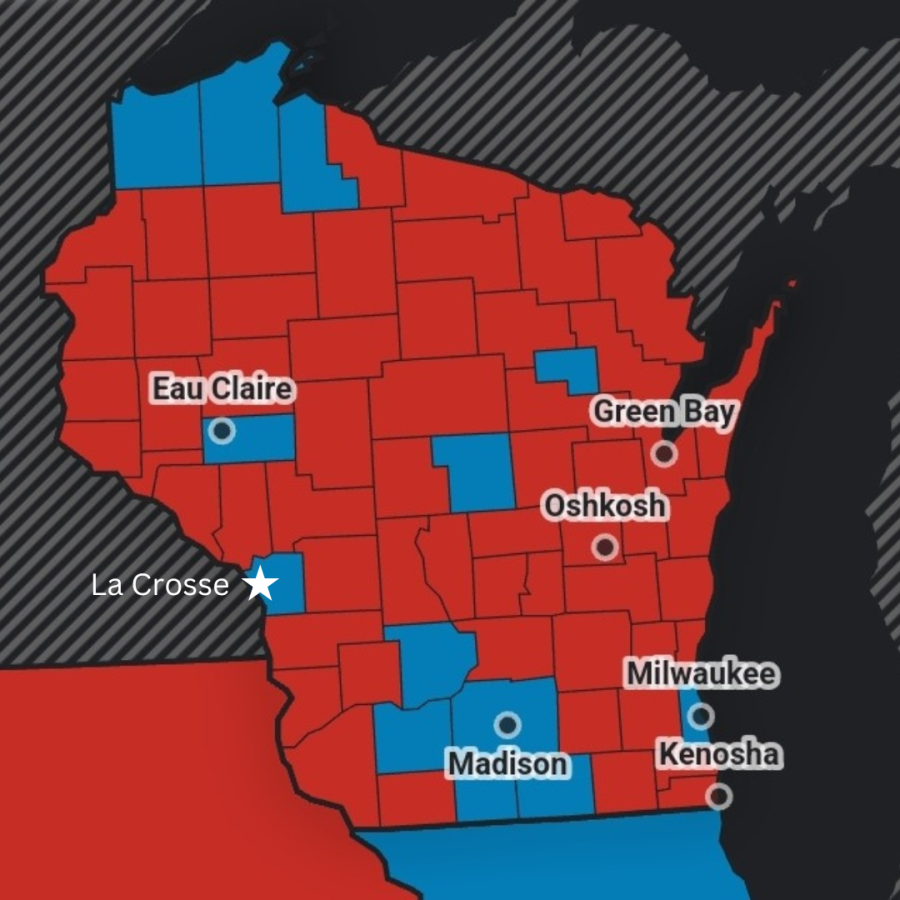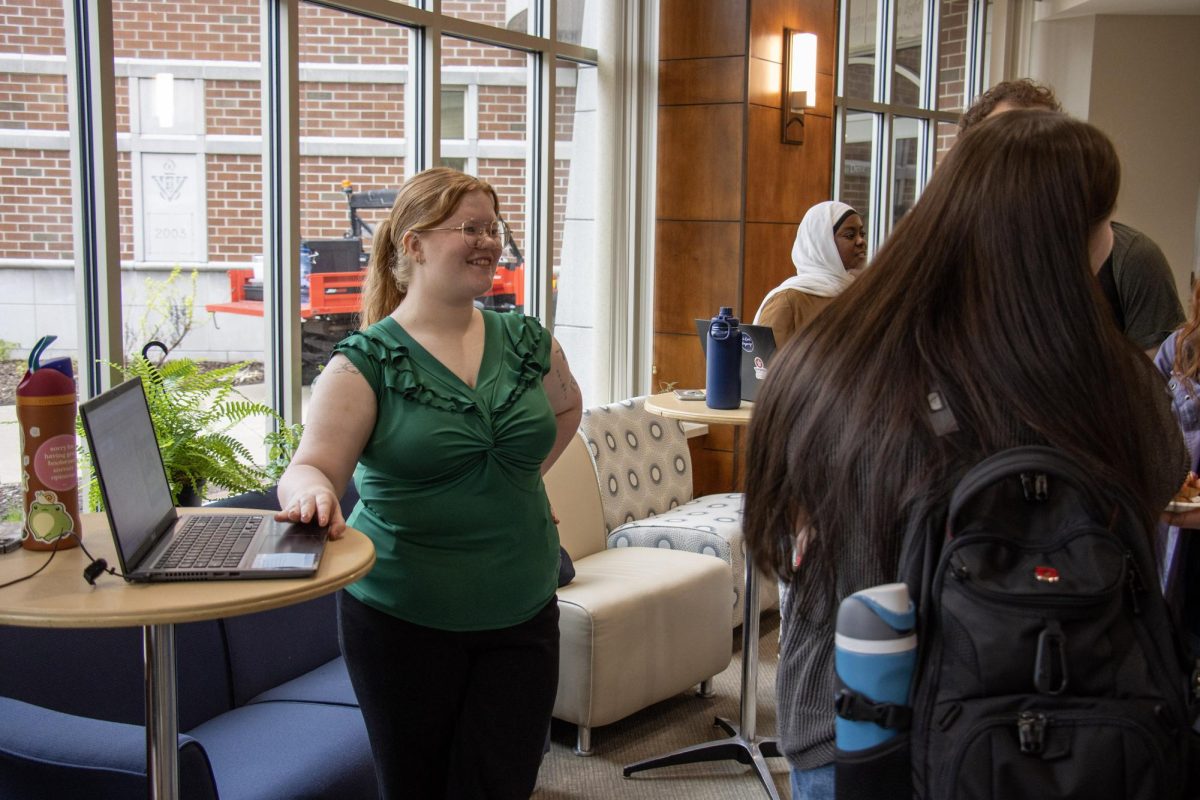Every vote counts: Wisconsin Midterm Election results
Wisconsin’s 2022 Midterm Senate race results as reported by the Associated Press. Map shows the state of Wisconsin.
December 7, 2022
Nov. 8 was the 2022 Midterm Elections and Wisconsin had some tight races with some unforeseen outcomes.
The Governor race between Democratic candidate Tony Evers and Republican candidate Tim Michaels was tight. According to Politico, Evers won with 51.2% of the vote, leaving Michaels with 47.8%, and Independent Ellis Beglinger with the other 1.0%. La Crosse County favored Evers, with 58.3% of La Crosse voters choosing him.
Another close statewide race was between Republican incumbent Ron Johnson and Democratic candidate Mandela Barnes. Johnson won with 50.5% of the vote, leaving Barnes with the remaining 49.5%. If it were up to La Crosse residents, however, Barnes would have won with a 55.7% majority. Barnes was especially popular with first-time voters, 53% of whom said they voted for the Democratic candidate, according to CBS News. Voter data shows that La Crosse County voted to elect a democrat in every major race. Politico reports that 55.7% of La Crosse’s voters chose democrat Barnes over republican Sen Johnson.
With 51.8% of the total vote, Wisconsin’s 3rd Congressional District went to Republican candidate Derrick Van Orden, sending him to the House of Representatives. While the district as a whole voted for Van Orden, La Crosse County residents leaned more towards his democrat opponent, Brad Pfaff.
According to the Milwaukee Journal Sentinel, Pfaff brought in 57.8% of the vote in La Crosse County, leaving Van Orden with the other 42.2%. However, only three out of nineteen counties to vote for a democrat in the majority—also known as “voting blue”—meaning that the district as a whole favored Van Orden.
CBS News exit polls provide a look into what La Crosse residents care about. When asked to choose which of the five provided issues mattered most in their ballot selections, 34% of voters chose inflation as their number one issue. Of those voters, 77% voted for Sen Johnson. The next highest rated issue was abortion at 31%. Of these voters, 81% voted for Barnes. After these two were crime (12%), gun policy (9%) and immigration (7%).
This exit poll reflects how the Democratic and Republican parties approached Midterm Elections campaigns. Democrats utilized the June 24 overturning of Roe v. Wade to mobilize young liberal voters. Republicans campaigned on the topic of inflation under the Biden Administration to reach older voters with economic frustration. “Each party is playing to its perceived strengths,” David Smith wrote in an article for The Guardian.
Overall, Wisconsin leaned Republican in this election. Of the thirteen state-wide races, seven went to the Republican candidate. Nationally, although Republicans didn’t bring on the “red wave” they were expecting, they were able to take over the House of Representatives. The House is now split 218 to 210, Republicans to Democrats. Currently, the Democratic party remains in control of the Senate, which is split 50 to 49. The last seat to be decided in a Georgia run-off election on Dec. 6.
News outlets are crediting new voters in Gen Z for their influence on the Midterm results. ABC News’ Isabella Murray wrote, “According to the exit polling, 18-to 29-year-olds accounted for 12% of voters in the midterms—the lowest share of the electorate compared to other age groups—but they skewed firmly for Democratic candidates, a trend that has only grown more pronounced in recent years.” Democratic candidates in Wisconsin were no different as CBS News reported that 70% of voters ages 18–29 voted for Barnes.
Viterbo’s own students had the opportunity to vote in Wisconsin this election, even if they’re not from the state. Sophomores Vera Shipley and Elisabeth Meyer were eager to vote on Nov. 8, getting up early in the morning to go vote before their classes. Shipley explained that there were some miscommunications with the polling place that created some obstacles, but she was determined to have her vote count.
When asked why voting is so important, she said, “People should have a say in laws that will affect them.” Eventually, she and Meyer were able to cast their ballots and receive their stickers, going on to encourage their peers to do the same.
With so many races being decided by one or two points, it’s clear that every vote counted in Wisconsin’s tight races this year. To find more information about your representatives and the next election, visit myvote.wi.gov.




